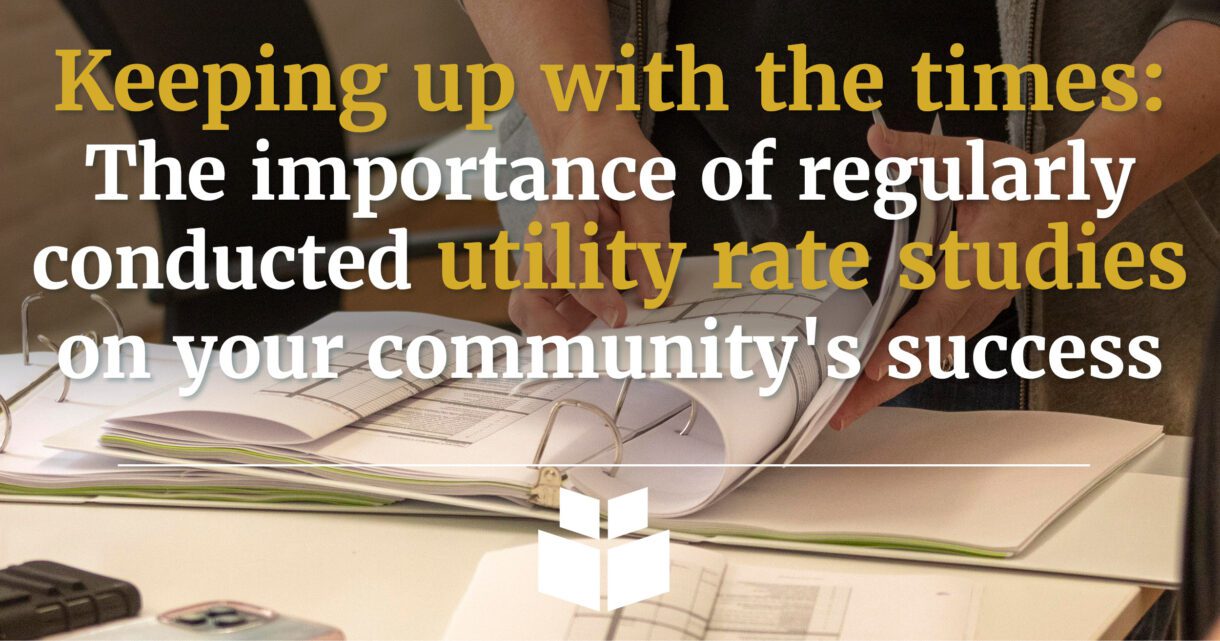
When was the last time that your community conducted a rate study for your utility fund? Was it last year? Was it three years ago? When thinking about municipal finance, the ability to fund a capital improvement plan (CIP) hinges on the frequency and accuracy of rate studies. If you haven’t undertaken a rate study since 2019, you’re at risk of outdated expenditure projections and potentially compromising the precision of your operational budget and CIPs. Now, more than ever, conducting annual rate studies emerges as a critical practice for communities aiming to maintain financial health and successfully execute essential projects.
For communities unfamiliar with the concept or those who haven’t conducted studies in some time, rate studies serve as essential tools. These examinations shed light on the financial landscape of utility systems, providing insights into whether communities can meet the financial demands of its operational costs and proposed projects or improvements. Beyond addressing immediate financial challenges, rate studies are pivotal for evaluating the feasibility of community initiatives, playing a critical role in responsible fiscal governance.
The effects of inflation on municipal capital
Inflation, a prevailing economic concern, casts a shadow on the labor market and capital goods within communities. Any municipality without a rate study since the beginning of the COVID-19 Pandemic likely grapples with outdated information. In addition to capital costs, inflation has significantly impacted construction and operating costs for water and wastewater projects. Inflationary pressures have greatly impacted day-to-day operational costs, especially in the cost of chemicals, electricity, and sludge hauling.
The recent surge in inflation introduces complexity to local government finances. The disconnect between revenue and expenditure growth poses severe consequences for the financial health of communities and impedes their ability to provide essential services to citizens.
If communities don’t regularly check their rates, they might fall behind as expenses rise. This can jeopardize their fund-balance stability and ability to provide services. To tackle these issues, communities need to be proactive. While it’s advised to perform annual rate studies, not all communities do it. It becomes tough to predict costs for the next five to 10 years when unexpected events such as a pandemic affect future operational and investment costs.
A comprehensive approach to funding and finance
To assist communities in navigating these complexities, WithersRavenel recommends setting clear goals and formulating plans to achieve them. For those unsure of where to begin, assistance is available from our funding and finance team.
“What distinguishes WithersRavenel from many other engineering firms is plan execution. Others provide their clients schedules and costs, but don’t provide a plan to pay for those improvements,” said WithersRavenel Funding & Asset Management Senior Project Manager Steven Miller. “At that point, the clients wonder how they will afford the project. We provide clients with answers to those questions. We look at their projects on the horizon and provide suggestions for funding and scheduling that provide pathways for financial stability and success. At the end of the day, we are giving the clients something that they can work with and make informed decisions for their community.”
In essence, the annual rate study is not just a financial exercise; it’s a strategic tool for ensuring the continued fiscal well-being of communities and the efficient delivery of essential services.
WithersRavenel has an in-house, dedicated funding & finance department that enables clients to finance and administer critical programs, initiatives, and projects. If you’re interested in learning more about how our team can help you, contact WithersRavenel’s Director of Finance Services, Shannon Moore, at smoore@withersravenel.com or (919) 978-3862.
